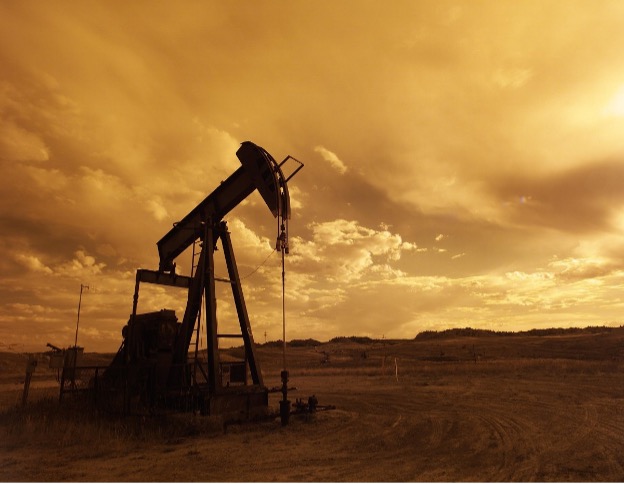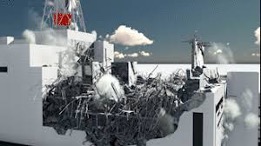
Figure 1: An oil pumpjack at dusk
Source: Pxhere
In Autumn of 2014, a gas leak was discovered at Admiral King Elementary school in Ohio, forcing the school to temporarily close down and send their students to neighboring elementary schools. It took over a month for the source of the leak to be identified—an uncapped gas well underneath the school gymnasium (WKYC, 2014).
The story exemplifies a growing problem in the U.S. and around the world: that millions of abandoned oil and gas wells, accumulated over centuries of drilling, are still releasing greenhouse gases and drilling byproducts into the atmosphere and groundwater (Groom, 2020). Some abandoned wells have no responsible operator, having been left behind by companies that went out of business and couldn’t afford to plug wells and clean up their drilling sites (EPA, 2018). This has left states responsible for dealing with the abandoned sites, but they have seen varying levels of success amidst a growing backlog of these so-called “orphan wells” and inadequate funding to address them (Quinton, 2018).
To make matters worse, a new study has found that in both the U.S. and Canada, government agencies have likely underestimated total emissions of methane, a greenhouse gas with greater warming potential than CO2, from abandoned oil and gas wells (EPA, n.d.). In fact, the study found that among all anthropogenic methane emission sources included in the U.S. and Canada’s greenhouse gas inventories, abandoned wells have the greatest uncertainty range (Williams et al. 2021). This makes it difficult to estimate the impacts these wells are currently having on the climate and broader environment, and the effects they will have as they continue to increase in number globally.
Some of the uncertainty around the emissions produced is due to limited studies directly measuring methane flow rates from abandoned wells. These direct measurements help researchers estimate total nationwide emissions. But methane flow rates from abandoned wells can vary depending on factors such as whether wells are plugged or unplugged (plugged wells reduce fluid migration and generally release less methane, but most wells in the U.S. are unplugged), their geographic region, and local regulatory practices (Williams et al., 2021). Without robust direct measurement data from a wide range of wells across the country, calculating overall emissions to a high degree of certainty is difficult.
Another source of uncertainty stems from the variable reports of the number of abandoned wells that exist. The EPA estimates a little over 3 million abandoned wells (EPA, 2018), while the Williams study puts this number at over 4 million, pointing out that many wells drilled before the 1950s likely went undocumented (Williams et al., 2021). Consequently, the authors calculated higher methane emissions from abandoned oil and gas wells than current EPA estimates.
The study goes to show that even after oil and gas drilling have stopped, effects on the environment, human health, and community safety persist. Gases leaking from abandoned wells have caused explosions and groundwater contamination, can migrate into adjacent geological formations and soils, and continue to drive climate change (Groom, 2020; Cahill et al., 2019). With the number of abandoned oil and gas wells increasing and the threat of climate change looming large, it will be essential to better understand and characterize their emission contributions, properly plug them, and curb further oil and gas exploration.
References
EPA (2018). Inventory of U.S. Greenhouse Gas Emissions and Sinks 1990-2016: Abandoned Oil and Gas Wells. https://www.epa.gov/sites/production/files/2020-04/documents/us-ghg-inventory-2020-main-text.pdf.
EPA (n.d.). Understanding Global Warming Potentials. https://www.epa.gov/ghgemissions/understanding-global-warming-potentials.
Cahill, A.G., Beckie, R., Ladd, B., Sandl, E., Goetz, M., Chao, J., Soares, J., Manning, C., Chopra, C., Finke, N., Hawthorne, I., Black, A., Mayer, K.U., Crowe, S., Cary, T., Lauer, R., Mayer, B., Allen, A., Kirste, D., & Welch, L. (2019). Advancing knowledge of gas migration and fugitive gas from energy wells in northeast British Columbia, Canada. Greenhouse Gases: Sci. Technol., 9, 134-151. https://doi.org/10.1002/ghg.1856.
Groom, N. (2020). Special Report: Millions of abandoned oil wells are leaking methane, a climate menace. Reuters. https://www.reuters.com/article/us-usa-drilling-abandoned-specialreport-idUSKBN23N1NL.
Quinton, S. (2018). Why ‘Orphan’ Oil and Gas Wells Are a Growing Problem for States. The Pew Charitable Trusts. https://www.pewtrusts.org/en/research-and-analysis/blogs/stateline/2018/07/09/why-orphan-oil-and-gas-wells-are-a-growing-problem-for-states.
Williams, J.P., Regehr, A., & Kang, M. (2021). Methane Emissions from Abandoned Oil and Gas Wells in Canada and the United States. Environmental Science & Technology, 55, 563-570. https://dx.doi.org/10.1021/acs.est.0c04265.
WKYC (2014). After a month, source of Lorain school gas leak found. https://www.wkyc.com/article/news/local/lorain-county/after-a-month-source-of-lorain-school-gas-leak-found/95-242077711.
Related Posts
Venture Capital Firm Based Out of Massachusetts Institute of Technology is Bringing Risky Back
Anyone can easily acknowledge the severity of major problems in...
Read MoreGeorge Washington Carver: “The Peanut Man”
Figure 1: George Washington Carver: “The Peanut Man” (Photograph ca. 1910)...
Read MoreTwin Impacts of the Chernobyl Disaster: Birth Defects and Mental Health
Figure 1: Damage caused to reactor 4 of the Chernobyl...
Read MoreVrinda Suresh



